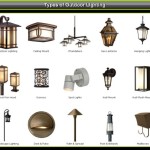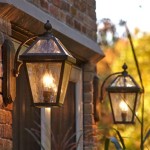How To Put Timers On Outdoor Lights
As a homeowner, adding a touch of charm and security to your outdoor space can be highly rewarding. One excellent way to achieve this is by installing timers on your outdoor lights. Timers allow you to set specific times for your lights to turn on and off, providing you with several benefits such as energy efficiency, enhanced security, and a more inviting ambiance. In this article, we will delve into comprehensive guide on how to put timers on outdoor lights, ensuring an effortless and successful installation.
Choosing the Right Timer
The first step in setting up timers for your outdoor lights is selecting the appropriate timer. Several types of timers are available in the market, each with its unique features and functionality. Here are a few popular options to consider:
- Mechanical Timers: These are the most basic type of timers, offering simple on/off functionality. They typically have a dial or switch to set the desired time.
- Digital Timers: Digital timers provide more precise control over the timing of your lights. They often come with features like multiple on/off settings, random modes, and daylight savings time adjustments.
- Smart Timers: Smart timers are the most advanced option, allowing you to control your lights from anywhere using a smartphone app. They offer a wide range of features, including scheduling, dimming, and integration with other smart home devices.
Consider your specific needs and preferences when selecting a timer. If you need basic functionality, a mechanical timer might suffice. For more advanced features and control, a digital or smart timer would be a better choice.
Wiring the Timer
Once you have chosen the right timer, it's time to wire it to your outdoor lights. This process involves cutting the existing wire that connects the lights to the power source and splicing the timer in between. It's essential to follow these steps carefully to ensure the timer operates correctly and safely:
- Turn Off the Power: Before you begin any electrical work, make sure to turn off the power to the circuit that controls your outdoor lights. This can be done by flipping the circuit breaker or removing the fuse associated with that circuit.
- Cut the Wire: Using a wire cutter, carefully cut the wire that connects the lights to the power source. Make sure to leave enough wire on both ends to work with.
- Strip the Wire Ends: Strip the insulation off the ends of the wires to expose the copper conductor. Use a wire stripper or a sharp knife for this task.
- Connect the Wires to the Timer: Follow the instructions provided with your timer to connect the wires to the appropriate terminals. Typically, there will be three terminals: Line (power in), Load (power out to the lights), and Ground.
- Secure the Connections: Use wire nuts or electrical tape to secure the connections you made in the previous step. Ensure that the connections are tight and secure to prevent any loose wires.
- Restore Power: Once all the connections are secure, restore power to the circuit by flipping the circuit breaker or replacing the fuse. Test the timer to ensure it's working correctly.
Setting the Timer
With the timer wired correctly, you can now set the desired schedule for your outdoor lights. The process of setting the timer varies depending on the type of timer you have. Refer to the manufacturer's instructions for specific instructions on how to set the timer.
Generally, most timers will have a dial or buttons to set the on/off times. Some timers also have additional features like random modes, daylight savings time adjustments, and more. Take the time to familiarize yourself with the features of your timer to make the most of its functionality.
Additional Tips
- Use weatherproof timers: Outdoor timers should be weatherproof to withstand rain, snow, and other elements. Look for timers specifically designed for outdoor use.
- Choose a timer with the right load capacity: Make sure the timer you select can handle the wattage of your outdoor lights. Exceeding the timer's load capacity can cause it to malfunction or overheat.
- Install the timer in a convenient location: Place the timer in an easily accessible location for easy operation and maintenance.
- Test the timer regularly: Periodically test the timer to ensure it's working correctly and adjust the settings as needed.
By following these steps and considering the additional tips provided, you can successfully install timers on your outdoor lights, enhancing the ambiance, security, and energy efficiency of your home's exterior.

How To Put Outdoor Lights On A Timer Electronicshub

Can You Put Outdoor Lights On A Timer Sorta Techy

Porch Light Timer 3 Easy Solutions You Can Install Today

How To Use A Timer Switch For Lights

3 Remarkably Easy Solutions For An Automatic Porch Light Timer

Landscape Outdoor Lighting Timer

3 Easy Automatic Porch Light Timers

How To Use A Timer Switch For Lights

How To Set Your Outdoor Lighting Timers

How To Use A Digital Timer Switch For Lights







